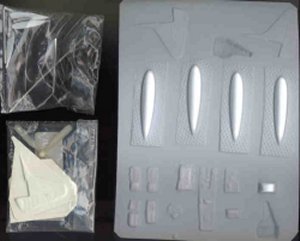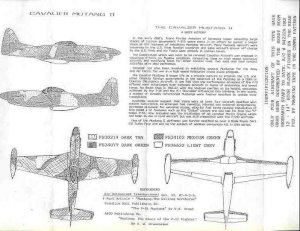Ready Room 1/48 Cavalier Mustang Conversion
By Al Superczynski
 |

 |
 This reissued conversion set is intended for use with the Hawk/Testors/Italeri P-51D and consists of a single sheet of vac-formed parts on .030 plastic, a choice of either four resin prop blades or an injection-molded prop for use in kits using hollow spinners, a vac-formed Dallas canopy, six white metal stores pylons, two pre-sized plastic strips, and a small piece of sheet plastic along with full instructions. No decals are included.
This reissued conversion set is intended for use with the Hawk/Testors/Italeri P-51D and consists of a single sheet of vac-formed parts on .030 plastic, a choice of either four resin prop blades or an injection-molded prop for use in kits using hollow spinners, a vac-formed Dallas canopy, six white metal stores pylons, two pre-sized plastic strips, and a small piece of sheet plastic along with full instructions. No decals are included.